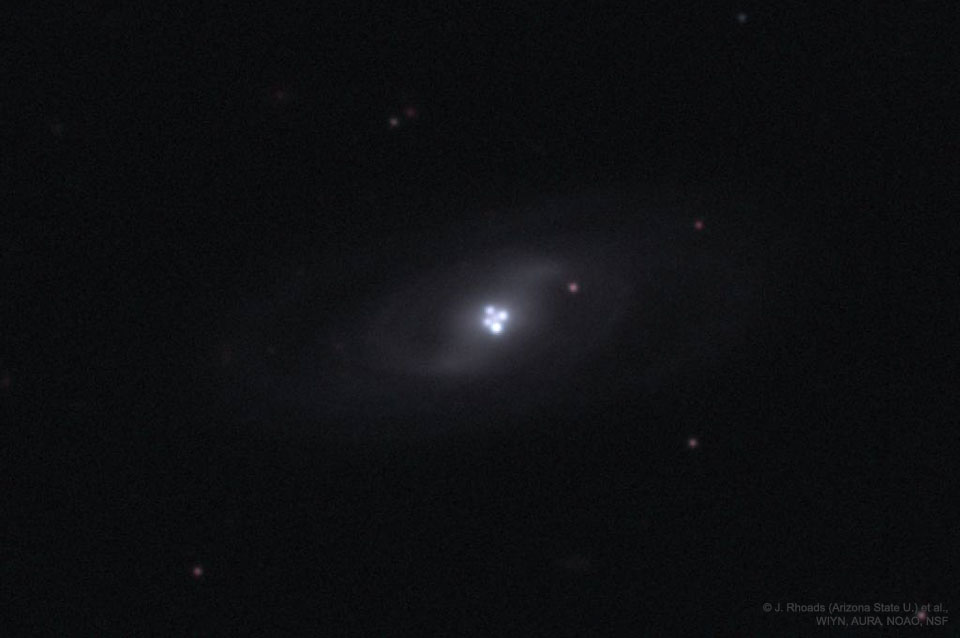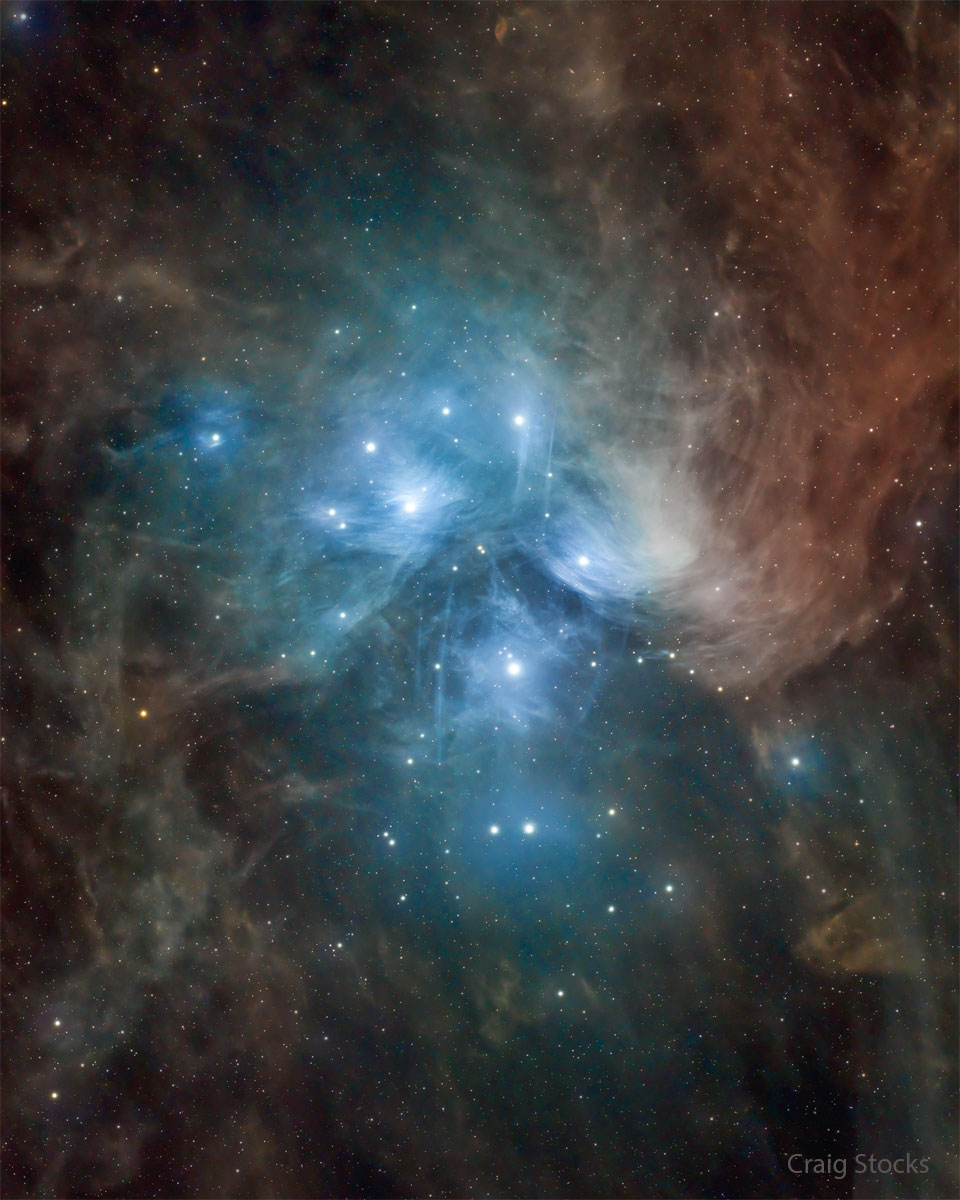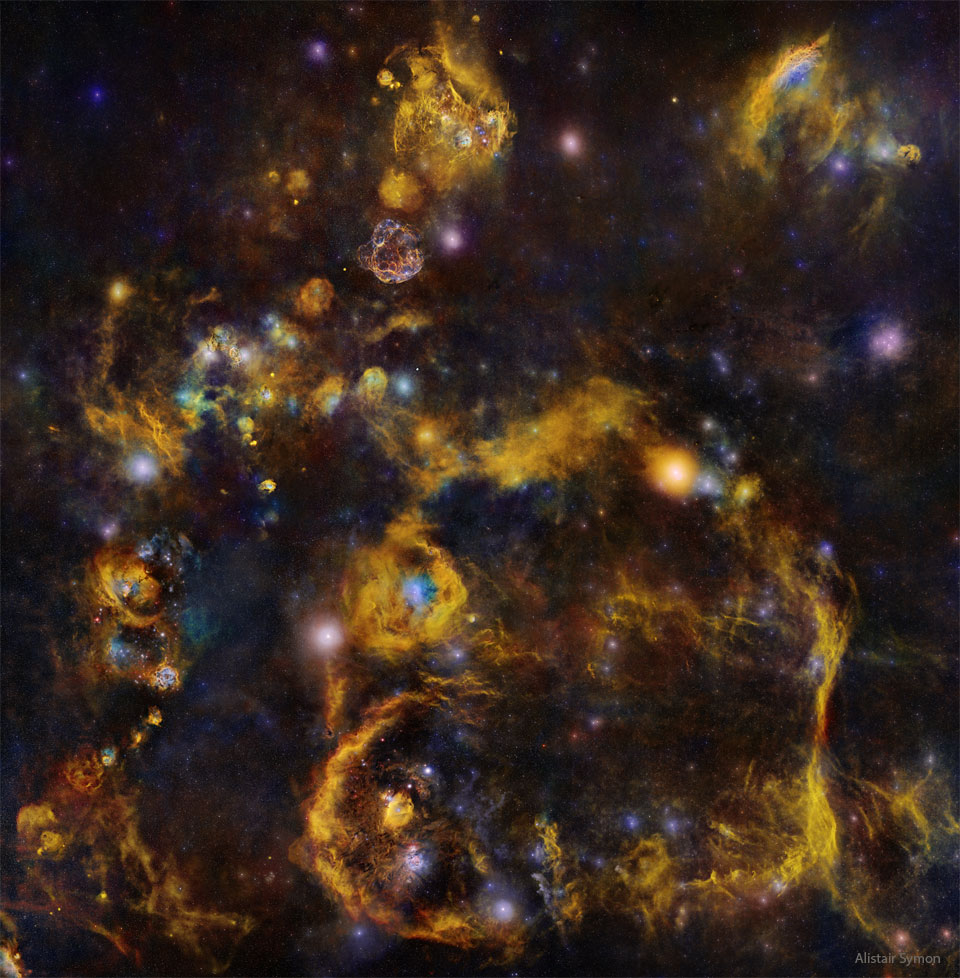
2017年12月17日:爱因斯坦的重力透镜十字架 -(The Einstein Cross Gravitational Lens)--原图下载
Image Credit & Copyright: J. Rhoads(Arizona State U.) et al.,WIYN,AURA,NOAO,NSF
说明: 大部份的星系只有单一个核心,不过,上面这个星系真的有四个核心吗? 由于这种答案实在太怪异了,让天文学家断言,在这张影像里,根本就看不见这个星系的核心。影像中心的苜蓿叶形天体,实际上是因为前景星系的强大重力场,才把遥远类星体的光,分裂成四个单独的影像。要出现这种类似海市蜃楼的现象,类星体要恰好排列在大质量星系核心的正后方。 这个效应称为重力透镜,而上面这种形态的影像称为爱因斯坦十字架。更有意思的是,这个爱因斯坦十字架的亮度会有变化,会因为前景星系中恒星所造成的重力微透镜效应,亮度偶而会增加。
原文:
Image Credit & Copyright: J. Rhoads(Arizona State U.) et al.,WIYN,AURA,NOAO,NSF
Explanation: Most galaxies have a single nucleus -- does this galaxy have four? The strange answer leads astronomers to conclude that the nucleus of the surrounding galaxy is not even visible in this image. The central cloverleaf is rather light emitted from a background quasar. The gravitational field of the visible foreground galaxy breaks light from this distant quasar into four distinct images. The quasar must be properly aligned behind the center of a massive galaxy for a mirage like this to be evident. The general effect is known as gravitational lensing, and this specific case is known as the Einstein Cross. Stranger still, the images of the Einstein Cross vary in relative brightness, enhanced occasionally by the additional gravitational microlensing effect of specific stars in the foreground galaxy.






评论